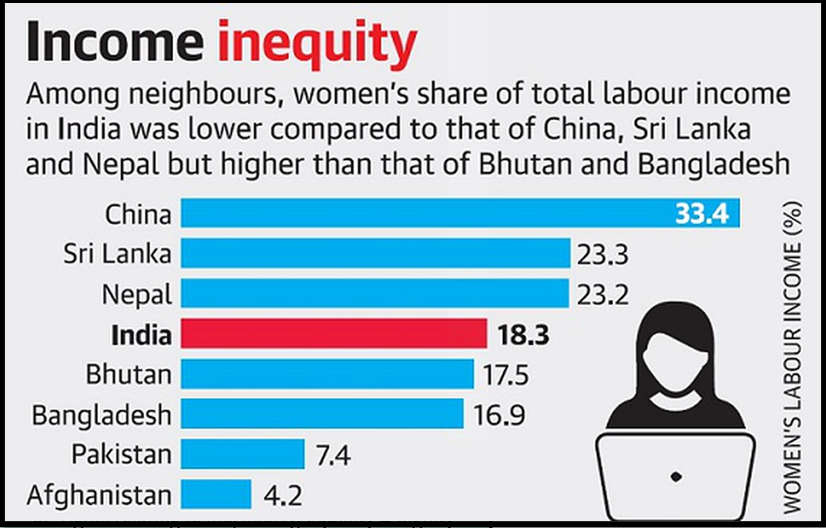“ADDRESSING INEQUALITY: EXPLORING MEASURES FOR EQUITABLE GROWTH IN INDIA”
Syllabus:
- GS-3-Inequality in India and its impact
Focus :
- Top of Form
- Income inequality in India is stark, with the top 1% owning 22.6% of national income and 40.1% of wealth in 2022-23.
- From 1990 to 2022, the number of very high net worth individuals rose from 1 to 162, while income tax filers increased from 1% to 9% between 2017-2020.
Source - TH
Introduction:
- Debate sparked by Congress’s Nyay Patra on inequality and wealth concentration.
- Prime Minister’s comments on wealth redistribution prompt discussions.
- Rising inequality evidenced by World Inequality database, posing questions on growth.
| Status of Inequality in India :
1. Growth in Average Incomes:
2. Emergence of Very High Net Worth Individuals:
3. Rise in Percentage of Income Taxpayers:
4. Extreme Levels of Inequality in India:
|
Election Issue and Political Economy:
- Inequality as a core election issue, reflecting concerns about economic disparities.
- Failure of trickle-down economics, emphasis on supporting ‘wealth creators.’
- Shift towards addressing inequality marks a significant political economy shift.
Redistribution Measures and Taxation:
- Public discussion focused on direct redistribution measures like taxing the rich.
- India’s low tax-GDP ratio and regressive taxation structure.
- Need for progressive taxation to address wealth inequality effectively.
Low Welfare Spending and Social Sector Allocation:
- Low public spending on health and social sectors compared to other countries.
- Challenges in achieving National Health Policy targets amidst COVID-19.
- Decline in budget allocations for crucial sectors like MGNREGA and education.
Questioning Nature of Growth:
- Focus on generating employment through equitable growth.
- Declining employment elasticity of output amidst jobless growth.
- Importance of creating decent jobs with adequate remuneration.
Role of Government in Job Creation:
- Government’s role in directly creating jobs through public services expansion.
- Importance of filling existing vacancies and improving quality of jobs.
- Direct job creation efforts to improve human development outcomes and reduce inequality.
Employment-Centered Growth Policies:
- Supporting small and medium enterprises for labor-intensive growth.
- Promoting skill training and human capital development.
- Enabling women’s participation in the labor market through supportive policies.
Conclusion:
- Need for a shift towards employment-centered growth for addressing inequality.
- Importance of government policies in promoting equitable growth and reducing disparities.
- Emphasizing the role of employment in tackling intergenerational inequality and promoting economic development.
Source:The Hindu
Mains Practice Question :
GS-3
“Discuss the significance of addressing inequality as a core election issue in India, focusing on measures such as taxation reforms, welfare spending, and employment-centered growth policies. Evaluate the role of government in promoting equitable growth and reducing economic disparities in the country.” (250 words)




